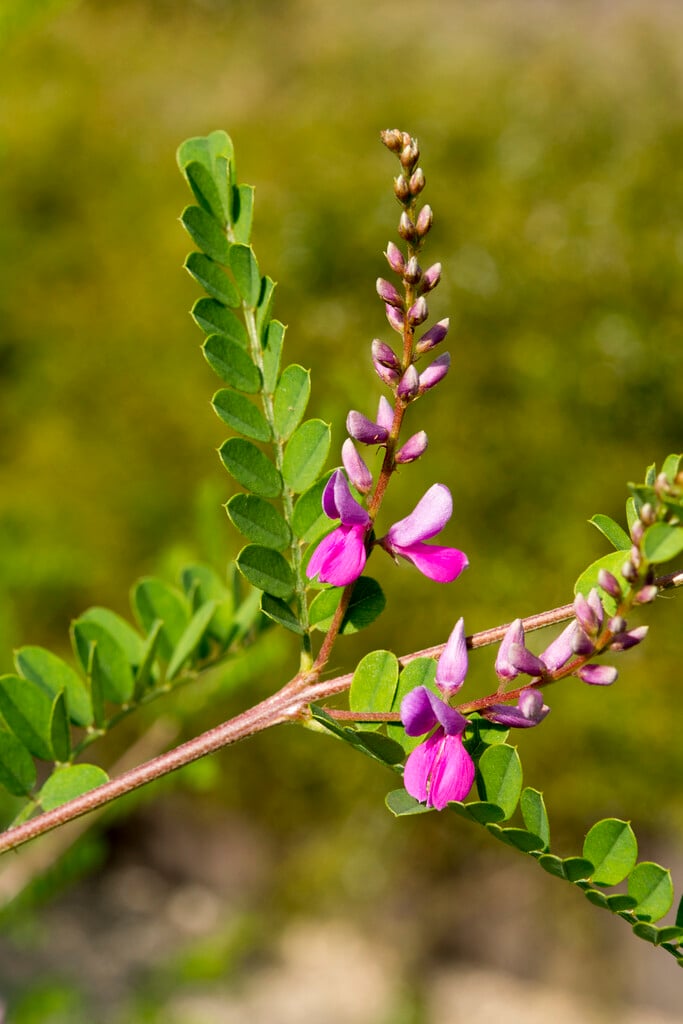Indigofera tinctoria
black henna
A spreading, deciduous shrub with arching stems up to 2m high and wide, with pinnate, pale green leaves and producing racemes of small wisteria-like pink flowers in summer. This plant is the source of the blue vegetable dye indigo which is present in small quantities in the leaves

Buy this plant
Size
Ultimate height
1.5–2.5 metresTime to ultimate height
5–10 yearsUltimate spread
1.5–2.5 metresGrowing conditions
Moisture
Moist but well–drained, Well–drainedpH
Acid, Alkaline, NeutralColour & scent
| Stem | Flower | Foliage | Fruit | |
| Spring | Green | |||
|---|---|---|---|---|
| Summer | Pink | Green | ||
| Autumn | Green | |||
| Winter |
Position
- Full sun
Aspect
South–facing or West–facing
Exposure
Sheltered Hardiness
H5Botanical details
- Family
- Fabaceae
- Native to GB / Ireland
- No
- Foliage
- Deciduous
- Habit
- Bushy
- Genus
Indigofera can be deciduous or evergreen trees or shrubs, herbaceous perennials or annuals with pinnate leaves and spikes or racemes of small, pea-like flowers in summer or autumn
- Name status
Correct
How to grow
Cultivation
Grow in well-drained, moderately fertile soil in full sun
Propagation
Propagate by seed or semi-hardwood cuttings
Suggested planting locations and garden types
- City and courtyard gardens
- Cottage and informal garden
- Low Maintenance
- Banks and slopes
- Wall side borders
Pruning
Pruning group 1 or Pruning group 13 if wall trained, but can be hard pruned in spring if needed
Pests
Generally pest-free
Diseases
May be susceptible to honey fungus in gardens where it is present but insufficient data to determine degree of susceptibility
Get involved
The Royal Horticultural Society is the UK’s leading gardening charity. We aim to enrich everyone’s life through plants, and make the UK a greener and more beautiful place.